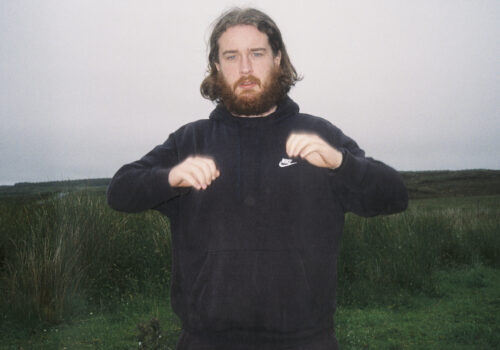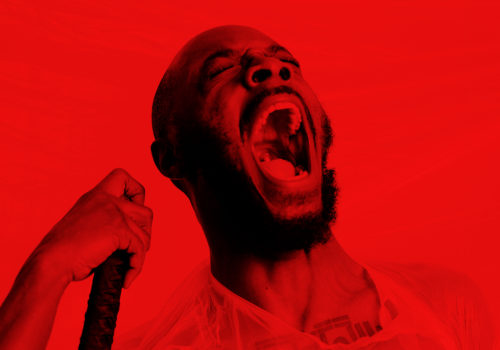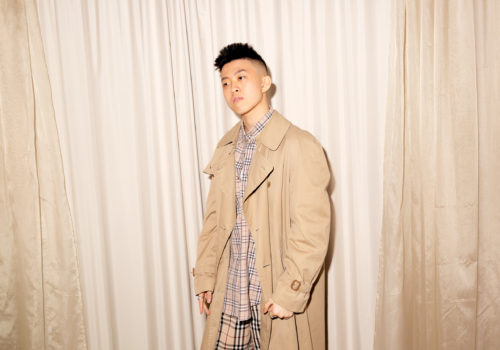Artist Spotlight: DECOY
By Emily Mullen
Inspiration can strike from the strangest of places. For Dublin artist DECOY, his struck while on a visit to Paris in 2019 when he spotted images of the iconic chat noir everywhere. The poster which shows a brazen-looking black feline with its tail flicked downwards, has become synonymous with the city and is dutifully pushed on tourists by hawkers, lodged into DECOY’s mind and he set about creating his own version of that image. Approaching it as he does with his mural work, DECOY set about reworking it, adapting it’s positioning, flipping the traditional colours around and applying his own interpretation of the image into something a bit more personal.
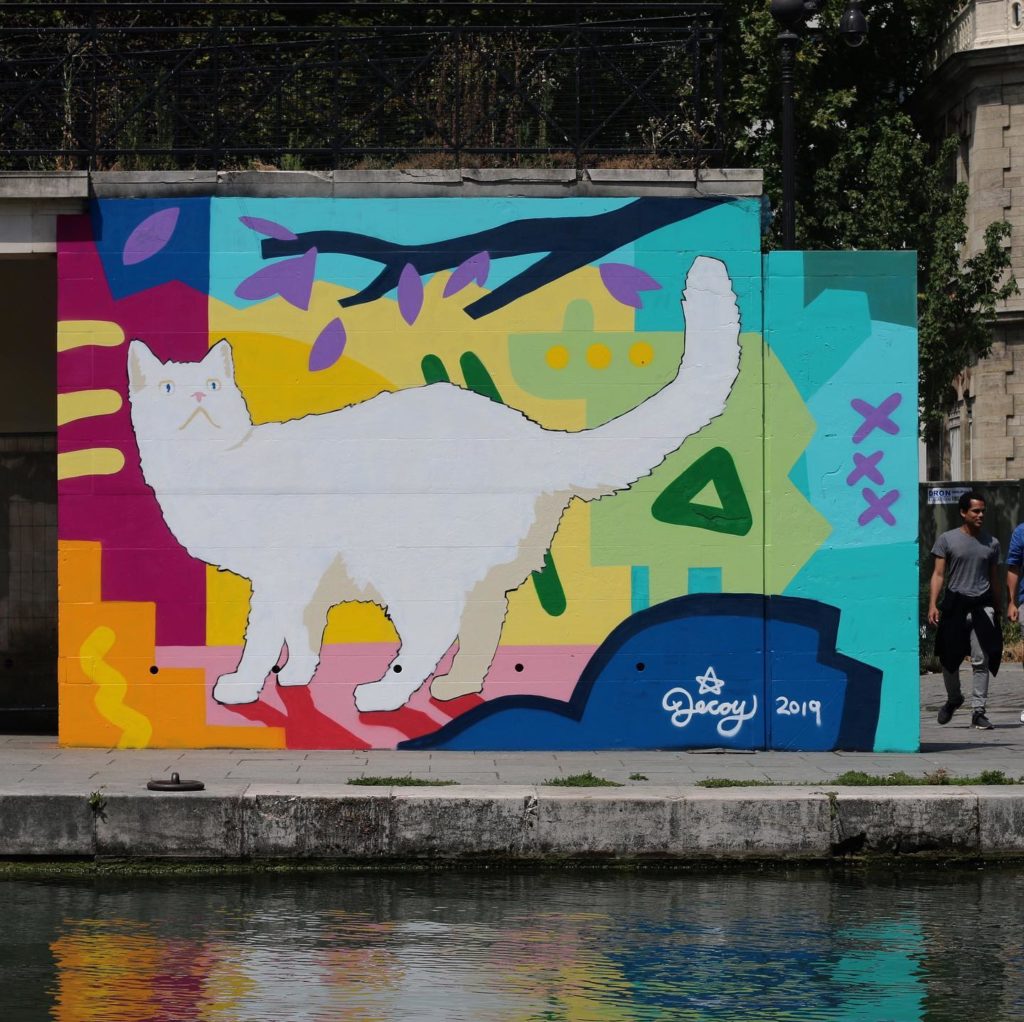
You’ve probably seen DECOY’s work along the highways and byways of Dublin. He’s a self-proclaimed “eye candy” maker who has been improving the walls of the city for quite some time now. In keeping with his peers, DECOY’s work is distinctive, never borrowed or stolen. His work centres around highly graphic shapes painted with an abstract colour palate and arranged into a layered composition. With a background working as a shipbuilder on Bray’s docks and assisting Bjarne Melgaard in New York, we tease out the origin story of how DECOY came to be, how it’s easier to work in plain sight and why he’s set himself the weighty task of documenting the Dublin street art scene:

Tell me about yourself, where you’re from and how you kicked off your career?
I’m originally from Dublin, studied here in NCAD, specialising in sculpture. After college, I didn’t actually stick with sculpture, I wanted to be a woodworker for a while. I did do that for a while, I worked with a boatmaker down in Bray and following that I made a boat of my own. I thought I was going to pursue a career as a shipwright weirdly enough, but then I moved over to New York and my visa wouldn’t let me work with heavy machinery so that meant that I could only work with artists. I started working with other artists, bigger names and they kinda retaught me enjoyment for painting and getting your name out that way. So about six years ago I came back to Dublin with a new view and that’s when I began with muralism.
Have you always been creative?
Yeah, I always remember wanting to be an artist, I was always drawing and doodling. I remember going to a pine forest when I was really young and making all sorts of things from what was there. I remember visiting IADT when I was about 12 or so, and knowing that I wanted to pursue art, seeing some of the crazy-ass masks that they make in the modelling department and thinking, “ah I wanna make monsters when I grow up”.
You touch a little bit on falling out of art after NCAD, did embedding yourself in a more creative place reconnect you with it?
You just work very hard in college, and you think you are going to come out and things will be just as easy as they were in there. Then you realise when you get into the real world that it’s a completely different ballpark you need to be full-on fighting your side of the ring at all times. More than anything I just really enjoyed making things, physical things, big things, fine-tuning a certain angle or whatever. But all the stuff that I had previously done came back to me, I use it all the time, so I view my career as a patchwork quilt of different experiences that all blends into one.

It’s interesting you say that you have a background in sculpture and a knack for woodwork because you can see it in your work.
It’s all about shape, I’m trying to make original shapes in ways that hopefully people haven’t thought of before. I’m going on a river of thought, considering “how can I make this shape differently?”, building on that and overlapping these shapes to make new shapes.
What was it about your time in New York that made you fall back into art?
I worked for artists over there, in their studios. The main artist I worked for Bjarne Melgaard who has since quit art, he’s become a fashion designer now. At the time he was a quite well-known painter, and I made sculptures for him out of materials like resin and hair, all this crazy stuff. Those sculptures ended up being shown in a Paris show and shipped off to buyers. I was just this lowly assistant throwing my hand at anything that was given to me. It just so happened that I was one of the only people who could use resins because I had picked it up when I was building boats. Through working on jobs like that I had learned an awful lot about materials, I know what goes on walls, I know a bit about concrete which is helpful when I’m fixing my walls, knowing about the compound that I’m painting on really helps too. It was also interesting to be around Melgaard, who was a fifty-odd-year-old artist and who was known for painting but also worked on sculptures and different things.
Was there a sense of seeing a famous artist like Melgaard at work, and realising that you could do that too?
Yeah definitely, I mean I was one of about twenty assistants working crazy hours for not very much money. One time this art collector came in and he bought eight of the paintings before they were even finished, and these paintings were worth a couple of hundred thousand. So that was crazy to experience that, but aside from being exposed to those sorts of things I just enjoy doing what I do. It’s more about how can I do more of what I do, rather than trying to make a mint out of it.
How did the concept of DECOY come about?
I moved back to Dublin, where I’ve been for the last five years. I had to learn everything again, I started painting with acrylics and I noticed that when I was painting on canvases it felt really really slow and then when I picked up a spray can and I painted a wall I could paint this big massive thing really quickly. I just thought “this is so much better” I can create so much more through this. So I just started doing paste-ups (a sheet of paper, board, or other backing applied to a wall or object using wheatpaste) first, going out with Solus and we still do them, we still meet up to do that every so often. But it was doing those paste-ups that I came up with the name DECOY, because I had to make a choice then and there about what I was going to call myself. The paste-ups have continued and I do them every so often which is good fun.

Who influences you?
I’ve been inspired by a lot of people I’ve worked with, both in the US and at home. Closer to home, one of my main teachers is Maser who I worked with for a little while and he just taught me so much. I learn off my peers as well, Aches is one of the guys I’ve learnt off, artists in the west of Ireland like Shane O’Malley. I hope that we all kind of influence each other a little bit, then create our own original stamp on our own work.
What has the highlight of your career been?
I don’t know how many highlights there have been [laughs] but I think right now good things are happening and there are really cool things happening in Dublin. While the pandemic has been absolutely awful I think that some really good things will come out of it when things open back up. Because of how things generally go with art, it’s always after hard times that good art gets created, and there are some really good players right now on the scene.
What’s the street art community like in Dublin?
It’s good when you get inside it, everyone is supporting each other. When you are out painting with someone else and you don’t have a particular sort of colour and everyone knows what an absolute task and a half it is to head down to All City [a spraypaint supply store] so everyone is sharing cans, paint and chipping in here and there. Every day is a big task, it’s very physical, so you kind of have to share things to make it easier. Everyone is always buying each other coffees like you are in it together because there is this symbiotic relationship between street culture and street art.
Is it tough to be considered an established street artist in Dublin?
Anyone who wants to be considered a street artist, or an urban artist, or a muralist or a graffiti writer can call themselves whatever they want to, but it’s when someone else defines what you are, then you become one. You can call yourself whatever you like but there is a certain time element to when you’ll be called by that. Dipping in and out of painting with a spray can I don’ think qualifies, but I’m not saying that these people can’t do this if they keep going at it.
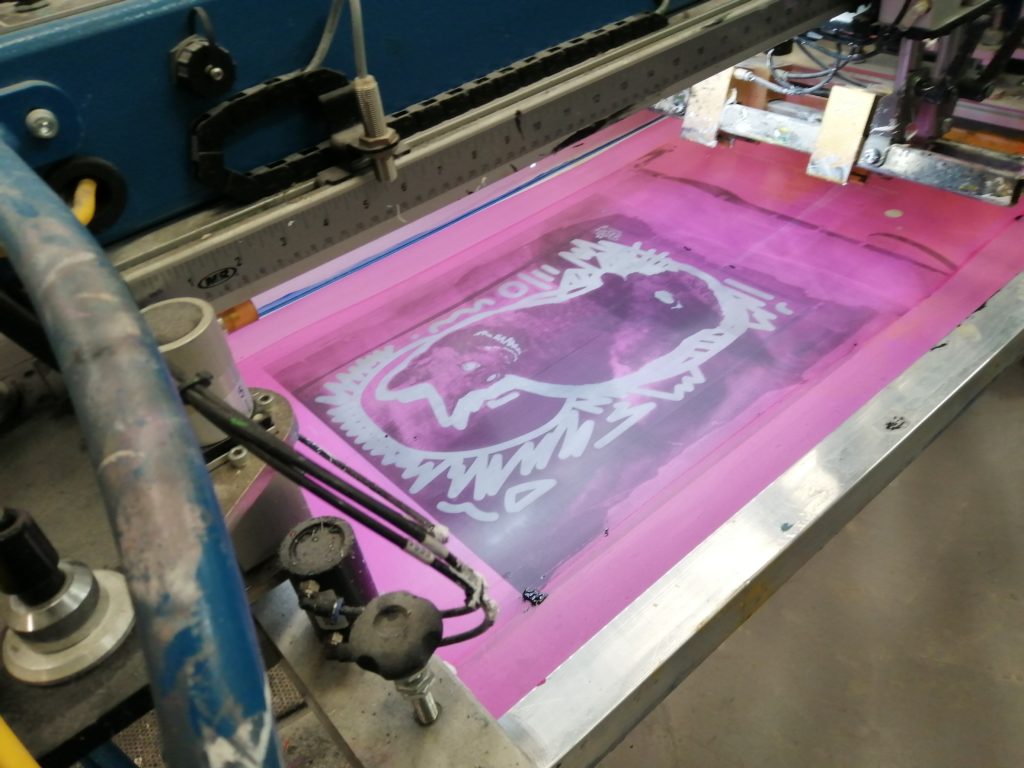
There does seem to be a growing trend of street artists creating work for local cafes, restaurants and businesses how does this tie in with the origins of street art?
There are two ways of thinking about it, it’s easy to be a muralist because its more accepted now, street art is wanted now, people directly see a correlation between business and getting your name out there through bright colours and really beautiful pieces of art but it’s still not as easy to be doing the things you shouldn’t be doing like getting out there in the middle of the night and working.
How has it been doing the things “you shouldn’t be doing”?
I think you can just really go out anywhere and paint wherever you want if you look like your supposed to be there. There’s a book called The Thirty-Nine Steps by John Buchan, it’s all about disguise and doing things right in front of people. If you do things right in front of people then they don’t know that your doing anything at all, as opposed to if you go out in the middle of the night wearing all black then your probably going to get caught.
How has it been working through the pandemic? Have things changed for you at all?
They definitely have, it’s been pretty difficult at times because there have definitely been lots of big forward-facing jobs that have been delayed, cancelled or they’ve gotten uninterested. There’s a definite element of time because sometimes you have to do the project right there and then, and if it doesn’t happen then, then the interest gets moved on. So I’ve seen a lot of these projects go by the wayside or where another artist is picked when you were the artist earmarked to do it. But there have been lots of opportunities in other ways and I think that I have been kinda lucky over the last couple of months.

Your more recent work focuses on cats, can you tell me a little more about that?
In 2019 I visited Paris and that’s where my whole cat fascination intertwined itself with my work. Originally it started off as a homage to the chat noir poster that’s synonymous with Paris, I’ve always really liked that poster so I thought about it adapting it for my own work. I have a white cat at home, Zima who I love and I said look I’ve loads of photos I’ll do my own piece but with my cat. Then when I was doing it this kind of fun style came out around the cat, I like the curiosity of the cat and the semiology of an animal that’s been around for centuries.
Where is your work going next?
Focusing on new images of the cat as a bit of an emblem and continuing to document my street art through video, but also documenting what’s happening in the street art culture in Dublin which I’ve been doing for the past year or so which has been giving me good results.
DECOY’s t-shirt which is priced at €28.00 can be found on the District website here, you can follow him on Instagram.

